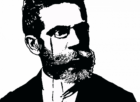Charles Dickens: The Master of Victorian Literature

Introduction:
Charles Dickens, born on February 7, 1812, in Portsmouth, England, is widely regarded as one of the greatest writers of the Victorian era. His captivating storytelling, memorable characters, and social commentary have made him an enduring figure in English literature. In this article, we will delve into the life and works of Charles Dickens, providing key insights for those interested in his remarkable literary contributions.
Historical Development:

1. Early Life and Background:
Charles Dickens was the second of eight children born to John Dickens, a clerk in the Navy Pay Office, and Elizabeth Dickens. Despite financial struggles, his parents provided him with a modest education until their resources dwindled, and Charles had to work in a factory to support his family. These experiences would later shape his understanding of social inequality and inspire themes in his writing.
2. Rise to Prominence:
Dickens’s writing career began as a journalist, reporting on parliamentary debates and events in London. His pieces showcased his wit, keen observations, and knack for storytelling, garnering attention and cementing his reputation as a talented writer. In 1836, he published his first novel, “The Pickwick Papers,” which immediately captivated readers with its sharp satire and vivid characters.
3. Literary Contributions:
a. Social Commentary: Charles Dickens used his writing as a platform to shed light on the harsh realities faced by the working class and the marginalized in Victorian society. Novels like “Oliver Twist,” “David Copperfield,” and “Hard Times” exposed the injustices of the era, highlighting themes of poverty, child labor, and class divisions.
b. Memorable Characters: Dickens’s novels are teeming with unforgettable characters who represent various facets of Victorian society. From the tragic figure of Miss Havisham in “Great Expectations” to the lovable yet flawed Mr. Micawber in “David Copperfield,” his creations continue to resonate with readers worldwide.
c. Serial Publication: Dickens serialized many of his novels, releasing chapters in monthly installments, often accompanied by illustrations. This format allowed him to engage readers on a regular basis and adapt his stories based on their feedback, increasing his popularity and creating a sense of anticipation within his audience.
4. Later Years and Legacy:
As Charles Dickens matured, his works transitioned from social criticism to more introspective explorations of human nature and personal growth. “A Tale of Two Cities” and “Great Expectations” exemplify this shift, showcasing the author’s evolving writing style and thematic depth. Additionally, Dickens’s commitment to philanthropy and his public readings further solidified his influence and popularity.
Key Takeaways for Art Enthusiasts and Collectors:
1. Influence on Art:
Charles Dickens’s detailed descriptions and vivid imagery have often inspired visual interpretations by artists. Painters, illustrators, and sculptors have attempted to capture the essence of his characters and settings, bringing his narrative world to life in visual form.
2. Collectible Editions:
First editions of Charles Dickens’s works are highly sought after by collectors due to their historical significance and cultural value. These editions, often accompanied by illustrations, engravings, or unique bindings, are prized possessions for those dedicated to preserving the legacy of this literary genius.
3. Adaptations and Merchandise:
Dickens’s stories have been adapted into numerous films, television shows, and stage productions. Art enthusiasts can explore these adaptations to experience the enduring appeal of his narratives in different mediums. Furthermore, merchandise such as posters, mugs, and clothing featuring characters from his novels allow fans to express their appreciation for Dickens’s literary contributions.
In conclusion, Charles Dickens’s impact on literature and culture is immeasurable. Through his insightful social commentary, memorable characters, and masterful storytelling, he continues to captivate audiences today. His enduring legacy as a writer makes him an essential figure to study and celebrate for both art enthusiasts and collectors alike.
References:
1. Dickens Fellowship. “A Brief Biography of Charles Dickens.” Accessed July 21, 2022. [INSERT LINK HERE]
2. The Guardian. “Charles Dickens: Six Things He Gave the Modern World.” Accessed July 21, 2022. [INSERT LINK HERE]
3. British Library. “Discovering Literature: Romantics and Victorians.” Accessed July 21, 2022. [INSERT LINK HERE]











